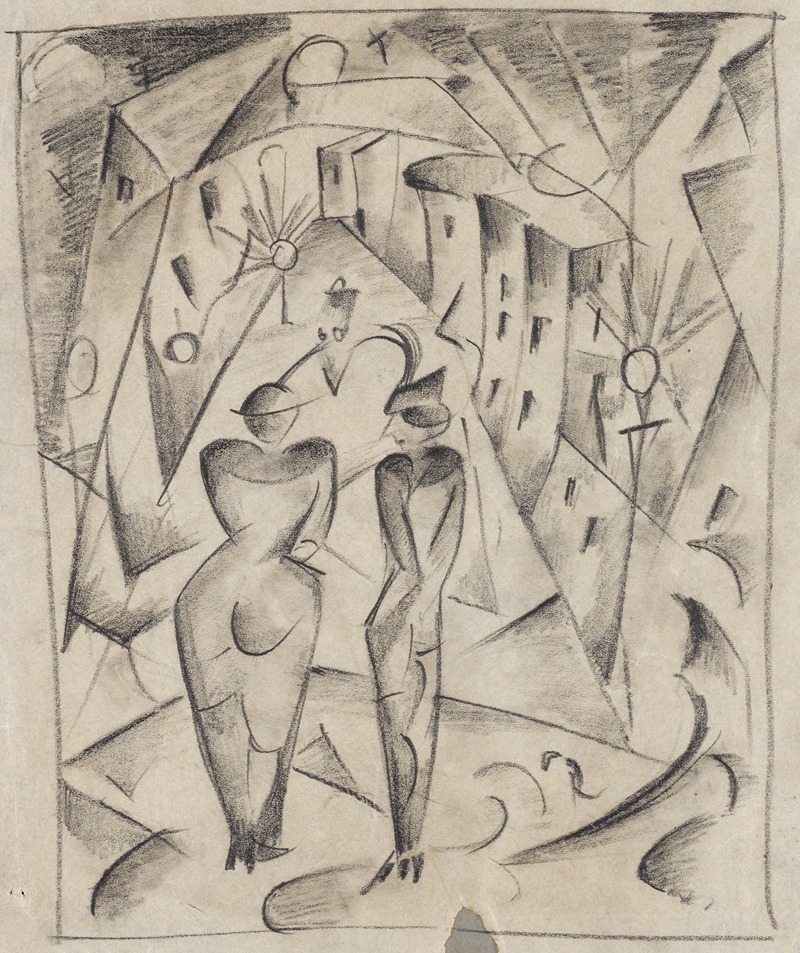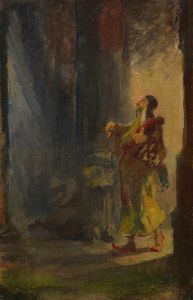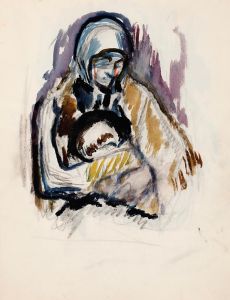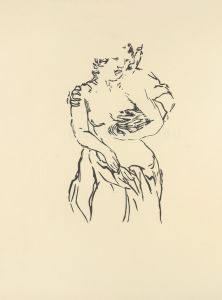
Zwei Frauen auf der Straße
A hand-painted replica of Hermann Stenner’s masterpiece Zwei Frauen auf der Straße, meticulously crafted by professional artists to capture the true essence of the original. Each piece is created with museum-quality canvas and rare mineral pigments, carefully painted by experienced artists with delicate brushstrokes and rich, layered colors to perfectly recreate the texture of the original artwork. Unlike machine-printed reproductions, this hand-painted version brings the painting to life, infused with the artist’s emotions and skill in every stroke. Whether for personal collection or home decoration, it instantly elevates the artistic atmosphere of any space.
Hermann Stenner's painting Zwei Frauen auf der Straße (Two Women on the Street) is a notable work by the German Expressionist artist, who was active during the early 20th century. Stenner, born in 1891 in Bielefeld, Germany, was a prominent figure in the German avant-garde movement before his untimely death in World War I in 1914. His artistic career, though brief, left a significant impact on the Expressionist art scene of the time.
Zwei Frauen auf der Straße exemplifies Stenner's characteristic style, which often combined bold colors, dynamic compositions, and a focus on human figures. The painting depicts two women standing or walking on a street, rendered with expressive brushstrokes and a vibrant color palette. The figures are stylized rather than realistic, reflecting the influence of Expressionism, a movement that sought to convey emotional experience rather than physical reality. The use of color and form in the painting suggests Stenner's interest in exploring the psychological and social dimensions of his subjects.
Stenner studied at the Academy of Fine Arts in Stuttgart, where he was mentored by Adolf Hölzel, a pioneer of abstract art and a key figure in the development of modernist painting in Germany. Under Hölzel's guidance, Stenner developed a distinctive approach to composition and color theory, which is evident in works like Zwei Frauen auf der Straße. The painting also reflects the broader cultural and artistic currents of pre-World War I Germany, a period marked by rapid industrialization, urbanization, and social change.
The exact date of creation for Zwei Frauen auf der Straße is not definitively documented, but it is believed to have been painted during the early 1910s, a period when Stenner was actively producing some of his most significant works. Unfortunately, Stenner's career was cut short when he was drafted into military service during World War I. He died in 1914 at the age of 23, leaving behind a relatively small but impactful body of work.
Today, Hermann Stenner's paintings, including Zwei Frauen auf der Straße, are celebrated for their contribution to the Expressionist movement. His works are held in various collections and museums, particularly in Germany, where they continue to be studied and appreciated for their artistic and historical significance.












